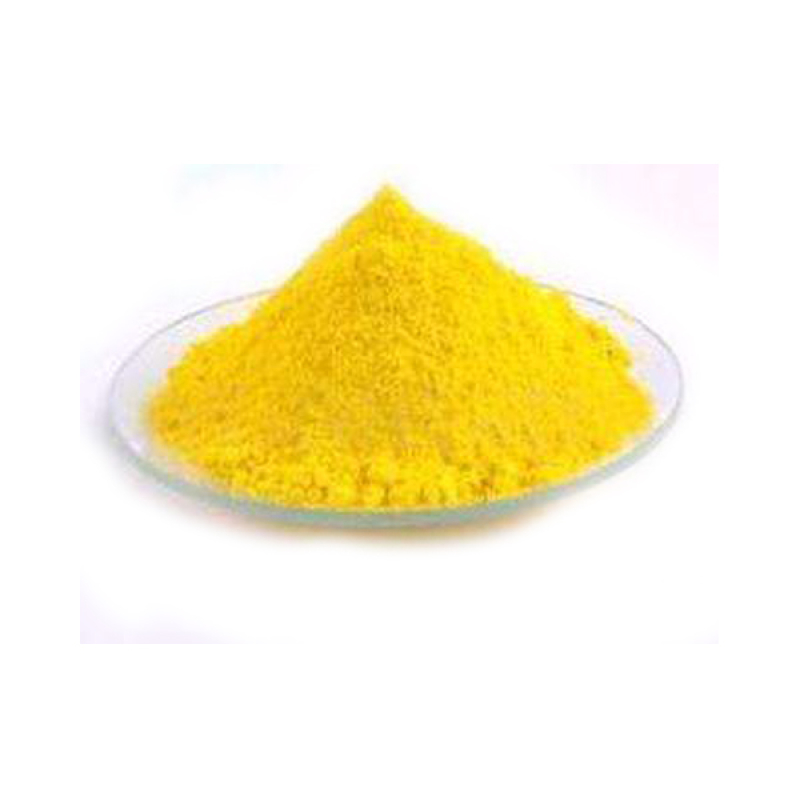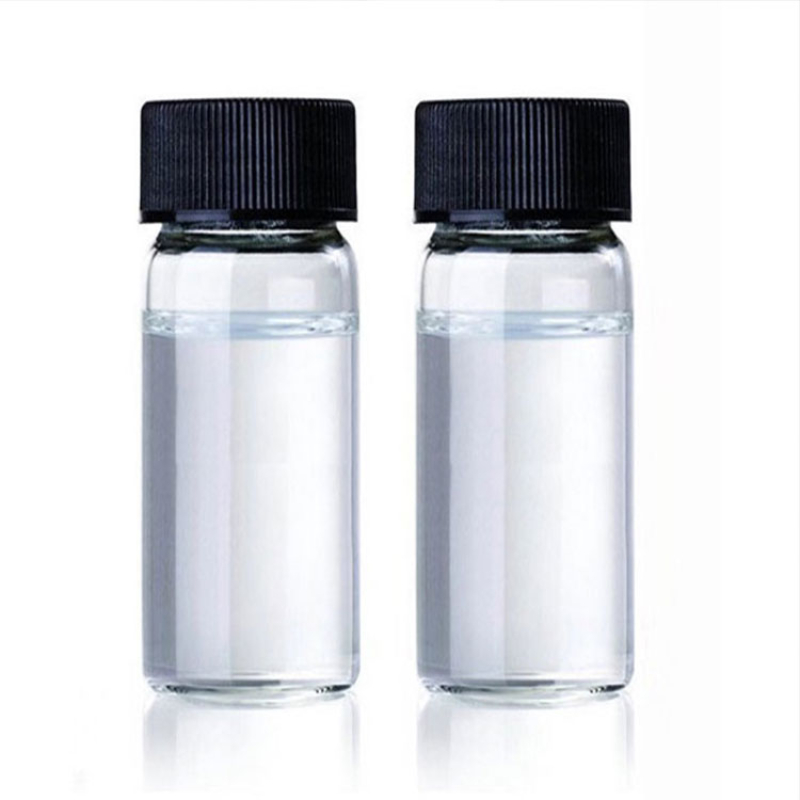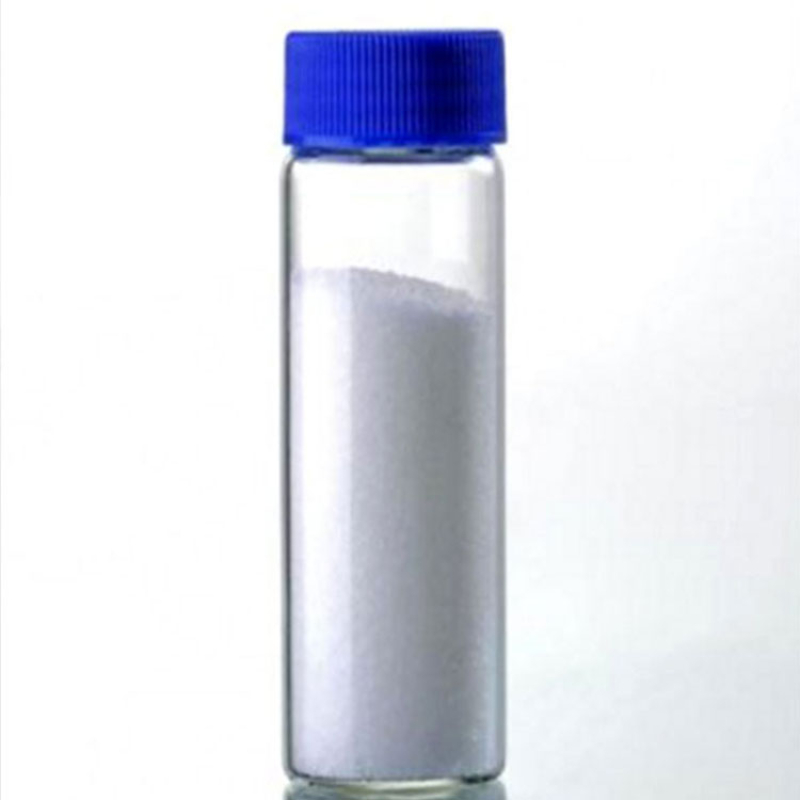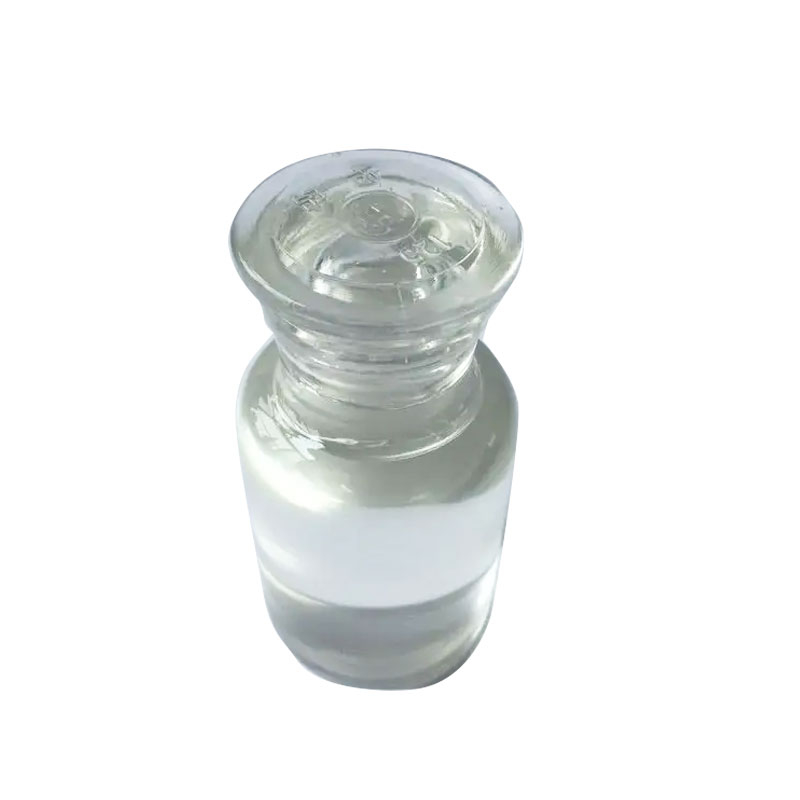Products Description of Carnitine CAS#541-15-1Carnitine is a type of B vitamins. Its structure resembles amino acids, so some people classify it as amino acids. Its main function is to help transport long-chain fatty acids to provide energy. This can prevent fat from accumulating in the heart, liver and skeletal muscle. Artificially synthesized carnitine has three forms: L-isomer, D-isomer and racemate, and L-carnitine has the best effect. L-carnitine is a compound with multiple physiologically active functions.
지금 연락하세요
Products Description of DecamethylcyclopentasiloxaneCAS#541-02-6Decamethylcyclopentasiloxane (cyclopentasiloxane) is a colorless, odorless, volatile liquid cyclic siloxane. It is safe and environmentally friendly and has been widely used in health and beauty products such as deodorants, antiperspirants, cosmetics, shampoos, body lotions, etc.
지금 연락하세요
Products Description of L-carnitine CAS#541-15-1Carnitine is a type of B vitamin, and its structure is like an amino acid, so some people classify it as an amino acid. Its main role is to help transport long-chain fatty acids to provide energy. This prevents fat accumulation in the heart, liver and skeletal muscles.Synthetic carnitine is available in three forms: L-carnitine, D-carnitine and racemate. L-carnitine is more effective. L-carnitine is a compound with multiple physiologically active functions.
지금 연락하세요
Products Description of Phthalonitrile CAS#91-15-6Aromatic nitrile compounds such as phthalonitrile are very important organic synthesis intermediates, which are widely used in medicines, pesticides, herbicides, insecticides, dyes, fragrances and natural products.
지금 연락하세요
Products Description of 1,2-Diformyloxyethane CAS#629-15-2Ethylene glycol diformate is a toxic substance that is liquid at room temperature and has a special odor.
지금 연락하세요
Products Description of Chlorobutanol CAS#57-15-8Colorless crystals. There are two types of crystals: containing half molecular crystal water and anhydrous. The melting point of the containing half molecular crystal water type is 78℃, slightly soluble in water (1:250), easily soluble in ethanol (1:1), glycerol (1:10), ether, chloroform and volatile oil. The melting point of the anhydrous type is 97℃, the boiling point is 167℃, and the 135℃ (32.7kPa).
지금 연락하세요
Products Description of 5-Methoxy-2-tetralone CAS#32940-15-1Light yellow or light red solid.5-Methoxy-2-tetralone Chemical PropertiesMelting point 32-36 °C (lit.)Boiling point 165°C/10mmHg(lit.)density 1.124±0.06 g/cm3(Predicted)vapor pressure 0.059Pa at 25℃Fp >230 °Fstorage temp. Keep in dark place,Sealed in dry,Room Temperaturesolubility Chloroform, Dichloromethane, Ethyl Acetate, Methanolform Solidcolor Yellowish OrangeBRN 1451623InChIKeyMDAIAXRTLTVEOU-UHFFFAOYSA-NLogP1.8 at 25℃CAS DataBase Reference32940-15-1(CAS DataBase Refer
지금 연락하세요
Products Description of Thianaphthene CAS#95-15-8Benzothiophene, molecular formula C8H6S. Molecular weight 134.19. White leaf-shaped crystals. Has the smell of naphthalene. Can volatilize with water vapor. Melting point 32℃, boiling point 221℃, 103~105℃ (2660Pa). Relative density 1.148432, refractive index 1.637437, UVλmax 227, 257, 288nm in ethanol.
지금 연락하세요
Products Description of 5-Methoxy-2-Tetralone CAS#32940-15-15-Methoxy-2-tetralinone is a chemical intermediate with a molecular formula of C11H12O2 and a molecular weight of 176.21.5-Methoxy-2-tetralone Chemical PropertiesMelting point 32-36 °C (lit.)Boiling point 165°C/10mmHg(lit.)density 1.124±0.06 g/cm3(Predicted)vapor pressure 0.059Pa at 25℃Fp >230 °Fstorage temp. Keep in dark place,Sealed in dry,Room Temperaturesolubility Chloroform, Dichloromethane, Ethyl Acetate, Methanolform Solidcolor Yellowish OrangeBRN 1451623InChIKeyMDA
지금 연락하세요
Methyl triphenyl phosphonium chloride Chemical PropertiesMelting point 221°C (dec.)Boiling point 332.65℃ at 101.3kPadensity 1.22 at 23℃vapor pressure 0.001Pa at 40℃storage temp. Inert atmosphere,Room Temperaturesolubility Soluble in methanol.form Solid:crystallinecolor White to Almost whiteSensitive HygroscopicLogP-1.73 at 20℃ and pH6.3-6.46Surface tension71.4mN/m at 1g/L and 20℃CAS DataBase Reference1031-15-8(CAS DataBase Reference)Safety InformationHazard Codes Xn;N,N,XnRisk Statements 21/22-38-41-51/53Safety Statements 22-26-36/37/
지금 연락하세요
Products Description of Ethylene glycol monoethyl ether acetate CAS#111-15-9Colorless liquid. Freezing point -61.7℃, boiling point 156.3℃, 51℃ (2.8kPa), relative density 0.973 (20℃), melting point -61.7℃, refractive index 1.4055 (20℃), flash point 51℃ (closed cup), 66℃ (open cup), ignition point 379℃. Miscible with general organic solvents and soluble in water.
지금 연락하세요
Products Description of Pentaerythritol triacrylate CAS#3524-68-3For photosensitive filmPentaerythritol triacrylate Chemical PropertiesMelting point 15℃Boiling point 359.71°C (rough estimate)density 1.18 g/mL at 25 °C (lit.)refractive index n20/D 1.483(lit.)Fp >230 °Fstorage temp. Inert atmosphere,Room Temperaturesolubility Chloroform (Slightly), Methanol (Slightly)pka13.63±0.10(Predicted)form Liquidcolor ColorlessSpecific Gravity1.16-1.19Water Solubility Immiscible with water.Sensitive HygroscopicBRN 6598752Stabilit
지금 연락하세요
Products Description of 5-Bromothiophenesulfonyl Chloride CAS#55854-46-15-Bromothiophene-2-sulfonyl chloride is an organic compound.5-Bromothiophenesulfonyl Chloride Chemical PropertiesMelting point 40-44 °C (lit.)Boiling point 100-102 °C/0.5 mmHg (lit.)density 1.985±0.06 g/cm3(Predicted)Fp >230 °Fstorage temp. Keep in dark place,Inert atmosphere,Store in freezer, under -20°Cform crystalline powdercolor Off-white/ faint lemonSensitive Moisture SensitiveCAS DataBase Reference55854-46-1(CAS DataBase Reference)Safety InformationHazard Cod
지금 연락하세요
Products Description of Cyanamide CAS#420-04-2Pure cyanamide is a transparent liquid, m.p.-115℃, b.p.-8.5℃, soluble in alcohols, phenols, amines, ethers, easily soluble in benzene and halogenated hydrocarbons, and 77.5% soluble in water at 15℃. High concentration cyanamide is very unstable and easy to polymerize, so stabilizers are often added.
지금 연락하세요
Products Description of 5-Bromo-2-pyridinecarboxylic Acid CAS#30766-11-15-Bromo-2-pyridinecarboxylic acid is a chemical substance with the molecular formula C6H3BrNO2.5-Bromo-2-pyridinecarboxylic Acid Chemical PropertiesMelting point 173-175°CBoiling point 319.5±27.0 °C(Predicted)density 1.813±0.06 g/cm3(Predicted)storage temp. Keep in dark place,Sealed in dry,Room Temperaturesolubility Soluble in methanol.form Powderpka3.41±0.10(Predicted)color White to off-whiteInChIKeyMNNQIBXLAHVDDL-UHFFFAOYSA-NCAS DataBase Reference30766-11-1(CAS DataBase Reference)S
지금 연락하세요
Cyclohexanol, 4,4-(1-methylethylidene)bis-, polymer with (chloromethyl)oxirane CAS#30583-72-3Hydrogenated bisphenol A epoxy resin is mainly used in insulating materials.Cyclohexanol, 4,4-(1-methylethylidene)bis-, polymer with (chloromethyl)oxirane Chemical Propertiesdensity 1.135[at 20℃]vapor pressure 0.002Pa at 20℃Water Solubility 58.6mg/L at 30℃InChIInChI=1S/C15H28O2.C3H5ClO/c1-15(2,11-3-7-13(16)8-4-11)12-5-9-14(17)10-6-12;4-1-3-2-5-3/h11-14,16-17H,3-10H2,1-2H3;3H,1-2H2InChIKeyCSSRVVKVKAJYLJ-UHFFFAOYSA-NSMILESC(C1CCC(O)CC1)(C1CCC(O)CC1)(C)C.C(C1OC1)ClLogP3.84 at 20℃EPA Substan
지금 연락하세요
Products Description of 3-Dimethylaminopropylamine 99.5% CAS#109-55-7Colorless and transparent liquid, soluble in water and organic solvents. Relative density 0.8100. Boiling point 133℃. Freezing point - 70°C. Below this temperature it solidifies into glass. Flash point (closed cup) 15℃. Refractive index 1. 4350.
지금 연락하세요
Products Description of Sodium dimethyldithiocarbamate CAS#128-04-1The pure product of sodium fumarate is a scaly white crystal, which is very soluble in water. The crystals obtained by the crystallization method contain 2.5 molecules of crystal water. When heated to 115°C, 2 molecules of crystal water are lost, and at 130°C, the crystal water is completely lost. The industrial intermediate is a 15% aqueous solution, which is a light yellow or grass green transparent liquid with a relative density of 1.06 and a pH of 9 to 11.
지금 연락하세요
Products Description of (1H-indol-3-yl)(2,2,3,3-tetramethylcyclopropyl)methanone CAS#895152-66-6White powder(1H-indol-3-yl)(2,2,3,3-tetramethylcyclopropyl)methanone Chemical PropertiesBoiling point 375.0±15.0 °C(Predicted)density 1.099±0.06 g/cm3(Predicted)storage temp. 2-8°Csolubility DMF: 50 mg/ml; DMF:PBS (pH 7.2); (1:7): 0.13 mg/ml; DMSO: 33 mg/ml; Ethanol: 17 mg/mlform A crystalline solidpka15.50±0.30(Predicted)InChIInChI=1S/C16H19NO/c1-15(2)14(16(15,3)4)13(18)11-9-17-12-8-6-5-7-10(11)12/h5-9,14,17H,1-4H3InChIKeyWYZQBEQQQKCTHM-UHFFFAOYSA-NSMILESC(C1C2=C(NC=1)
지금 연락하세요
Products Description of 1-Methylpyrrolidine CAS#120-94-5Colorless, transparent, volatile liquid. Freezing point -90°C, boiling point 79.5~80.5°C, relative density 0.819, refractive index 1.4240, flash point -21°C.
지금 연락하세요
Products Description of Pal-Tripeptide-1 CAS#147732-56-7 Palmitoyl tripeptide-1 is a matrikine signal peptide that acts on the dermis and can promote the synthesis of extracellular matrix such as collagen and glycosaminoglycans, strengthen the dermis, make the skin thicker and firmer, relieve wrinkles, and have a stronger ability to resist ultraviolet radiation.Pal-Tripeptide-1 Chemical PropertiesBoiling point 913.0±65.0 °C(Predicted)density 1.105storage temp. Store at -20°Csolubility DMF: 30 mg/ml; DMSO: 10 mg/ml; Ethanol: 30 mg/mlform A solidpka3.16±0.10(Pr
지금 연락하세요
Products Description of Glyceryl monostearate CAS#31566-31-1 Glyceryl monostearate is an emulsifier and additive for food; it is used as an emulsifier in cosmetics and pharmaceutical ointments.
지금 연락하세요
Products Description of 1-Chloroisoquinoline CAS#19493-44-81-Chloroisoquinoline can be used as a pharmaceutical synthesis intermediate, such as the preparation of the compound 1-phenylisoquinoline.
지금 연락하세요
Products Description of 1-Ethylpiperazine CAS#5308-25-8N-Ethylpiperazine (EPA) is one of the piperazine derivatives. As a pharmaceutical intermediate and fine chemical, it is widely used in pharmaceutical and organic synthesis. It is mainly used to synthesize ethyl ciprofloxacin antibiotics. It is also used as a synthetic raw material for dyes and plant protection agents. It is also widely used in fungicides and surfactants.
지금 연락하세요


































